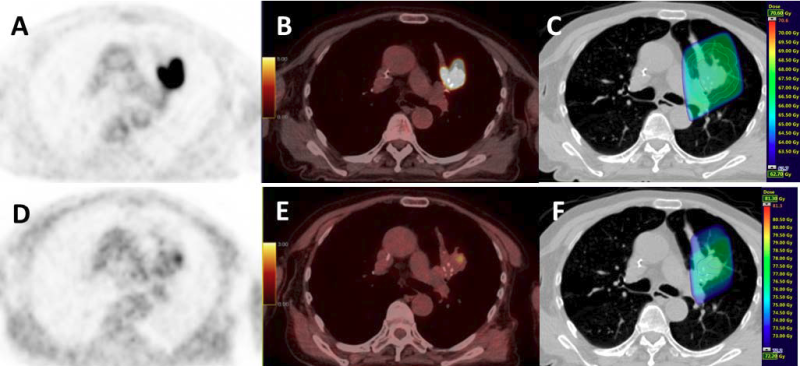Phase II study: Radiotherapy dose increase to hypoxic NSCLC lesions

Fluorine-18 (18F)-fluoromisonidazole (FMISO) is a positron emission tomography (PET) radiotracer that is widely used to diagnose hypoxia (insufficient oxygen supply to tissue), and non-small cell lung cancer (NSCLC) patients with FMISO uptake are known to face a poor prognosis. A multicenter French Phase II study featured in the July issue of The Journal of Nuclear Medicine (JNM) investigated whether a selective radiotherapy (RT) dose increase to tumor areas with significant FMISO uptake in NSCLC patients could improve outcomes.
The study, conducted by 15 academic PET facilities across France, evaluated 54 patients with localized, advanced non-small cell cancers, who were undergoing chemoradiotherapy. For each patient, two FDG-PET/CT and two FMISO-PET/CT scans were performed using the same machine and under the identical operational conditions. Quality control was centrally supervised to secure homogeneity in the image quality in all participating centers. In 24 of the patients, the radiotherapy dose could be increased up to 86 Gy on hypoxic areas identified on FMISO PET/CT. Unfortunately, this dose increase did not improve patient outcomes.
On the bright side, Pierre Vera, MD, PhD, of the Henri Becquerel Cancer Center and Rouen University Hospital in Rouen, France, notes, "We demonstrate that this approach of radiotherapy boost based on hypoxia PET is feasible in a multicenter setting. Regarding the clinical aspect, a recent randomized trial (Bradley Lancet Oncol 2015) failed to demonstrate the benefit of escalated radiotherapy dose in large target volumes. Our data show that smaller volumes, identified on their functional characteristics using hypoxia PET/CT, can be adequately targeted. In addition, no significant toxicity has been observed in patients receiving radiotherapy boost."
More information: Pierre Vera et al, Phase II Study of a Radiotherapy Total Dose Increase in Hypoxic Lesions Identified by 18 F-Misonidazole PET/CT in Patients with Non–Small Cell Lung Carcinoma (RTEP5 Study), Journal of Nuclear Medicine (2017). DOI: 10.2967/jnumed.116.188367
















